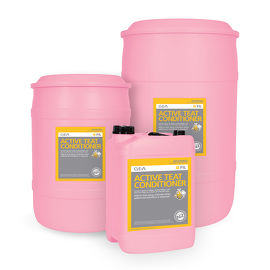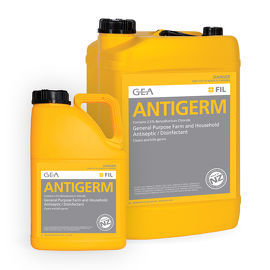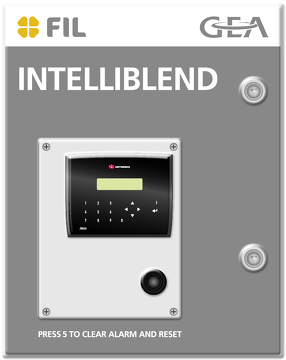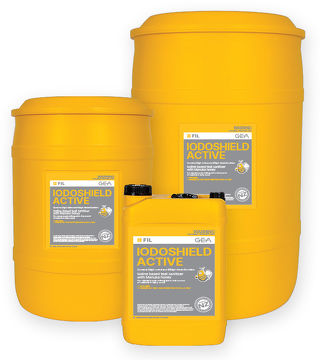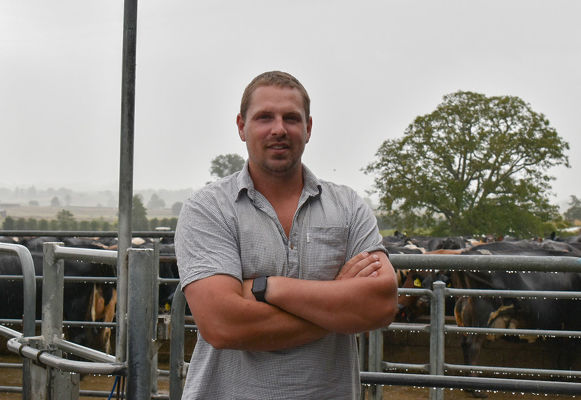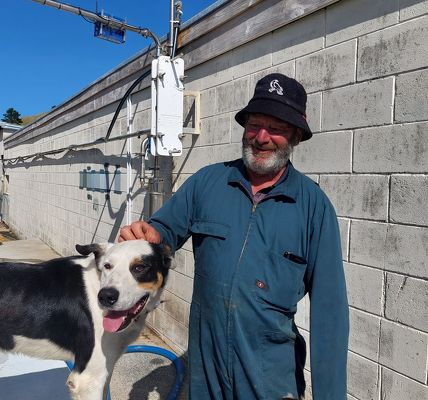Kirstie & Rob Hornblow - Canterbury
Kirstie & Rob of Kirbin Farming reduce mastitis by being proactive with herd health
Prioritising animal health and following best-practice procedures is how Ashburton contract milkers Kirstie and Rob Hornblow have improved results and gained efficiencies.
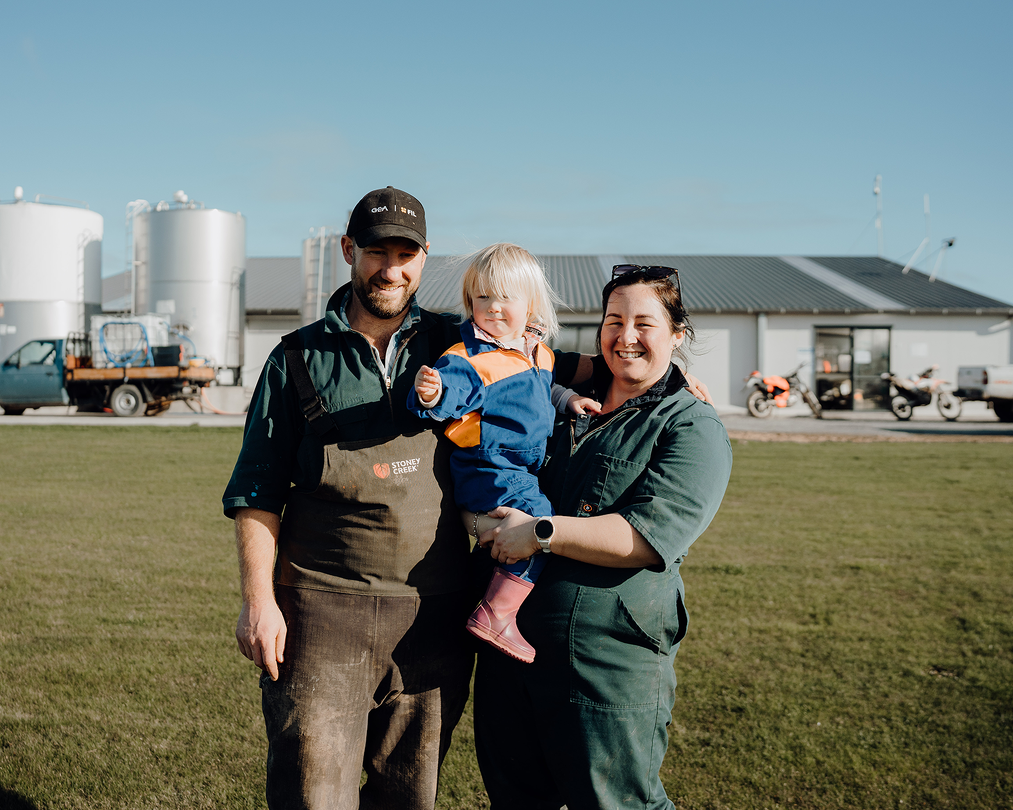
A real passion for dairy farming
Farming runs in the veins of both Kirstie and Rob. Kirstie’s farming journey begun when she started relief milking while at school and Rob grew up on a sheep and beef farm in Hawkes Bay.
“I was always going be a farmer,” says Rob. Even from when I was 10 years old, when my father got out of bed, my feet hit the ground too.”
It was the clear progression path that attracted Rob to dairy farming.
“I could see there was a way through the system from junior to 2IC to Farm Manager and then onto contract milking, sharemilking, and farm ownership in the future.”
Together with four staff, two-year-old Emersyn and a baby on the way, Kirstie and Rob are into their third season on 288 hectares at Brackleigh Farm north of Ashburton.
The team milk 1,200 cows twice-a-day through a 70-bail rotary shed with automatic cup removers, automatic drafting and in-shed feeding. The latest addition are cow collars.
During their first season, they encountered challenges with E. coli and black mastitis and high somatic cell count (SCC).
They set out with a clear view that a vigilant approach to preventing mastitis would be best for the herd, the entire team, and their young family.
“As a dairy farmer, being proactive with herd health is paramount because if you're not doing right by your cows, they're not going to get what their potential is,” says Rob. “Our cows are the ones that help us achieve our goals by putting milk in the vat.”
Kirstie adds, “If we don't invest in our cows, our cows can't do the best by us. As a farmer, it's our job. We have to care for the land, care for the cows and care for our team.”
Getting the basics right
Turning things around meant simple, clear procedures from day one of calving.
One of Kirstie’s biggest philosophies in the dairy is cleanliness. “If you’re going to get dirty, you’re going to get a dirty result.”
It’s making sure you have the hygiene basics covered: clean apron, wearing gloves and dipping hands in Antigerm.
A 5-step process is followed to achieve better results with their colostrum cows.
“We bring the new mums that have just calved into the dairy, we pre-spray their teats. We trim their tails. We wipe the teats with alcohol wipes to kill all the bugs. We strip the cows to check for any abnormalities. And we test the colostrum with the brix refractometer to make sure that we're only feeding the best colostrum to our replacement calves,” says Rob. “We then RMT cows before graduating to the supply vat.”
“We used to do some of the steps but not all of them. As we started working with FIL, we started to learn more about the issues with two-to-four-day mastitis. That’s when we started to wipe teats with alcohol wipes. I think adding that in to remove bacteria is really what helped us achieve better results with our colostrum cows.”
Consistency is key
By the second season, they’d already made significant improvements.
“If we don't have processes and systems, we don't have consistency. If we don't have consistency, we don't get results,” says Kirstie. She adds that there were no exemptions to the rule.
By implementing easy-to-follow procedures, Rob and Kirstie give their team ownership of the work they put in. “We don't have to be there to hold their hand,” she adds.
“One of our big improvements that we are proud of is that our total mastitis for last season is down from 10% to 8%,” says Kirstie.
“A lot of that result starts right back at the start of calving when you're preventing those cows from getting mastitis and following those good procedures is really helped set us up for a good season,” adds Rob.
The use of red drugs is something Kirstie and Rob want to see the back of.
“As contract milkers, if we don't have milk going into the vat, we don't make money. So red milk going down the drain is money out of our pocket as well as the farm owner's pocket,” says Kirstie.
“We've managed to reduce or eliminate the antibiotic resistance that we had encountered. We've reduced our down cows from 120 animals to 20, which is huge because it swallowed up so much time.”
During their first season their milk fever numbers were higher than ideal.
“Around 10% of the herd got milk fever and that doesn't help mastitis with the cows lying in the mud and leaking their milk,” says Rob.
Their SCC is now around 125,000, down from 145,000 last season. They’re aiming for 100,000.
“There's still some improvements to be made but being able to reduce it has been a great achievement.”
Striking a balance
When Kirstie and Rob talk about the juggle that is life and farm, they are both quick to point out their work-life balance “looks a little bit different to someone that works in town.”
“This is our passion; this is our job. This is our home, so as a family we have to do things a little differently,” says Kirstie.
Having the procedures in place means it’s easy to integrate new people into their system and they’re able to leave the farm in the capable hands of their team so they can spend time away too.
“We have a good team who understand our systems and procedures so that we are able to just go away for the afternoon and spend some time as a family,” Rob adds. “We don’t necessarily have to be going far.”
Creating more efficiencies with added automation
The local FIL Area Manager, Mike Robinson, installed an Intelliblend last season and say not only does the teat spray mixing system help streamline routine, it also has had a major impact on labour.
“Again, consistency is key,” says Kirstie. “We've got four guys and they're guaranteed to mix teat spray differently. But with the Intelliblend, we've got one guy and he does it the same every time. It's not a huge task to refill a teat sprayer, but it's still a task that someone has to do.
“Over $4,000 in labour costs is saved annually. That time could be spent checking cows or checking pasture. It could mean that the team are going home so they can spend time with their families, which is equally as important as us spending time with our family.”
Sights set on the future
Looking ahead, the team are looking for further improvements and efficiencies.
“Our future plans for the herd are to continue to reduce the animal health costs that we currently incur by reducing mastitis,” says Rob. “We would like to get down to 5% treatments.”
Their 5-year plan is to slowly buy the cows off the farm owners, on top of the 40 they already have, and go 50/50 sharemilking.


